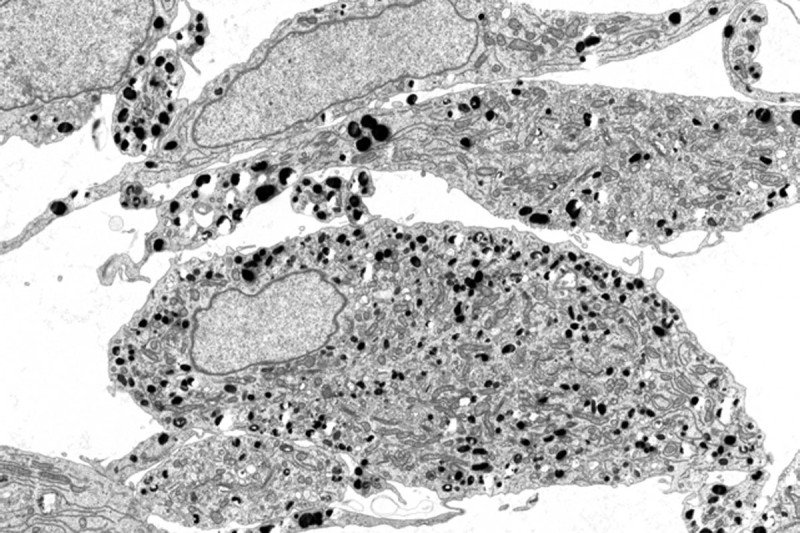
This image shows melanocytes – cells that protect the skin from ultraviolet radiation – created in a Memorial Sloan Kettering laboratory using stem cell technology. A light-absorbing pigment called melanin is produced in numerous compartments of each melanocyte. In the image, which was captured using electron microscopy, these compartments appear as dark spots.
Melanin production gives the skin its characteristic pigmentation and increases during sun exposure to protect cells from the DNA-damaging effects of UV light.
A team of researchers led by developmental biologist Lorenz P. Studer, who directs the Center for Stem Cell Biology, generated the melanocytes from human embryonic stem cells. Published in the journal Cell Reports in April, their approach involves growing the stem cells in a carefully controlled manner while subjecting them to the specific chemical signals that drive the formation of melanocytes in a developing embryo.
New Research Tools
The researchers were able to generate melanocytes at different stages of development — including cells that are mature and fully functional as well as their immature precursors. The achievement gives them new tools to study how melanocytes develop and function normally, and how failures in these processes might lead to some diseases, including melanoma.
In addition, the investigators used induced pluripotent stem cell (iPSC) technology to produce melanocytes similar to those seen in patients with Hermansky-Pudlak syndrome or Chediak-Higashi syndrome, two rare skin disorders. The cells provide a unique system to study the underlying causes of these diseases and identify new drugs.
“I feel very lucky to have been given the opportunity to work on such a thrilling project,” says Yvonne Gruber Mica, a student of the Louis V. Gerstner, Jr. Graduate School of Biomedical Sciences, Memorial Sloan Kettering Cancer Center, and the first author of the study. She looks forward to taking part in future investigations in which stem-cell-derived melanocytes will be used to study melanoma and other melanocyte-associated diseases.



